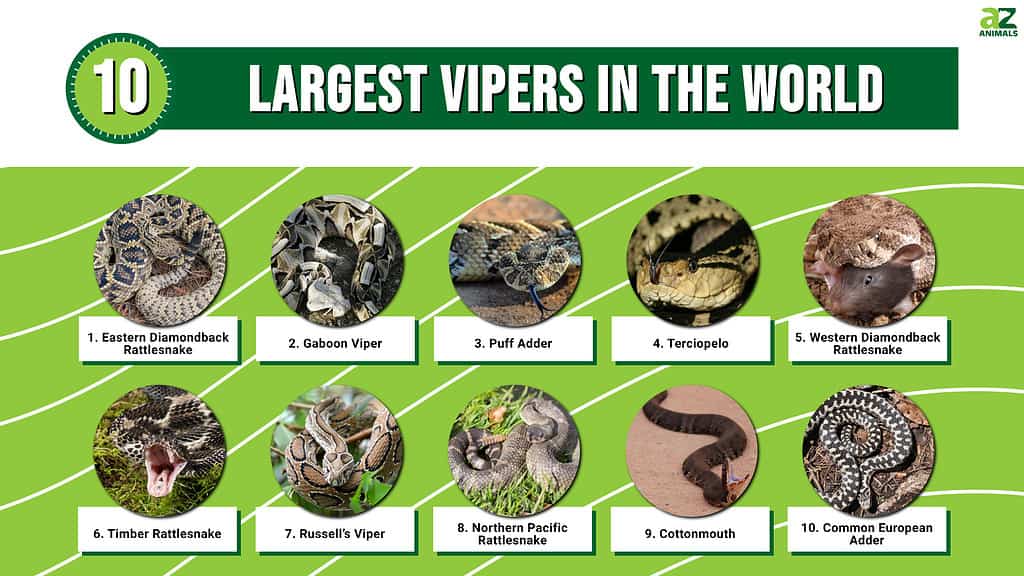
Vipers are a type of snake that live on almost every continent on Earth, except Australia, Antarctica, and some islands. They’re characterized by long, hinged fangs that can fold in and out like switchblade knives. All vipers are venomous, and all share characteristic vertically elliptical pupils, like a cat’s eye.
The family of vipers encompasses around 200 species, split into subfamilies: Old World vipers and pit vipers. Species of viper range in size from under a foot long to over six feet long for the largest vipers in the world.
Like other reptiles, vipers live longer than mammals of roughly the same size. Reptile cells do not seem to show signs of aging as quickly as other animals. Because there are different types of vipers, this can vary from species to species, but generally, vipers live between 10 and 30 years. However, they have been known to live even longer.
Read on to learn more about ten of the largest vipers in the world—number one will blow your mind!
10. Common European Adder (Vipera berus)
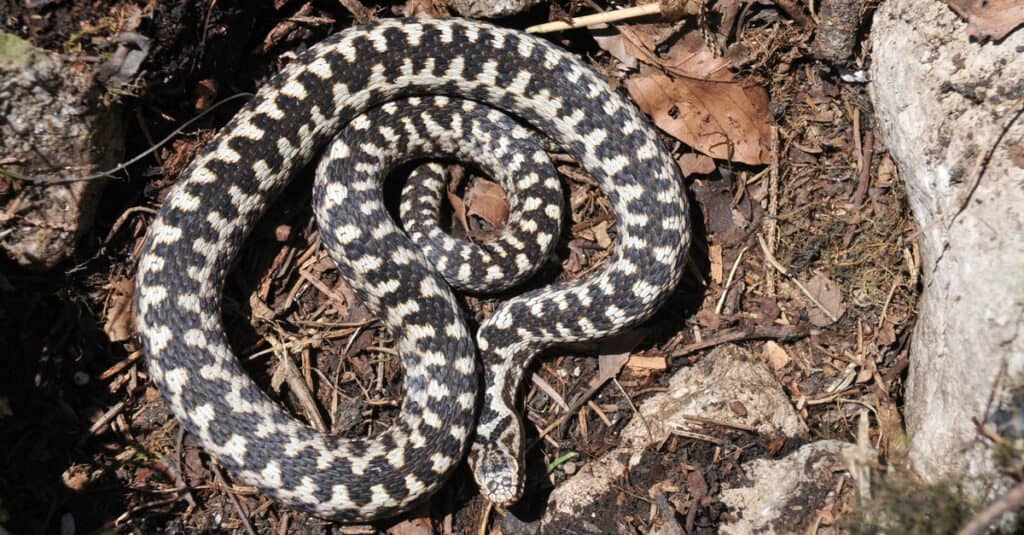
European adders, also known as common adders or common vipers, live throughout Western Europe and Asia.
©/Shutterstock.com
They may not be the largest vipers in the world, but at three feet long, European adders are no tiny snakes. Like all vipers, they’re venomous, though their venom is not particularly potent, and they rarely bite people. These snakes eat anything small enough to catch, like rodents, reptiles, birds, insects, and amphibians.
9. Cottonmouth (Agkistrodon piscivorus)
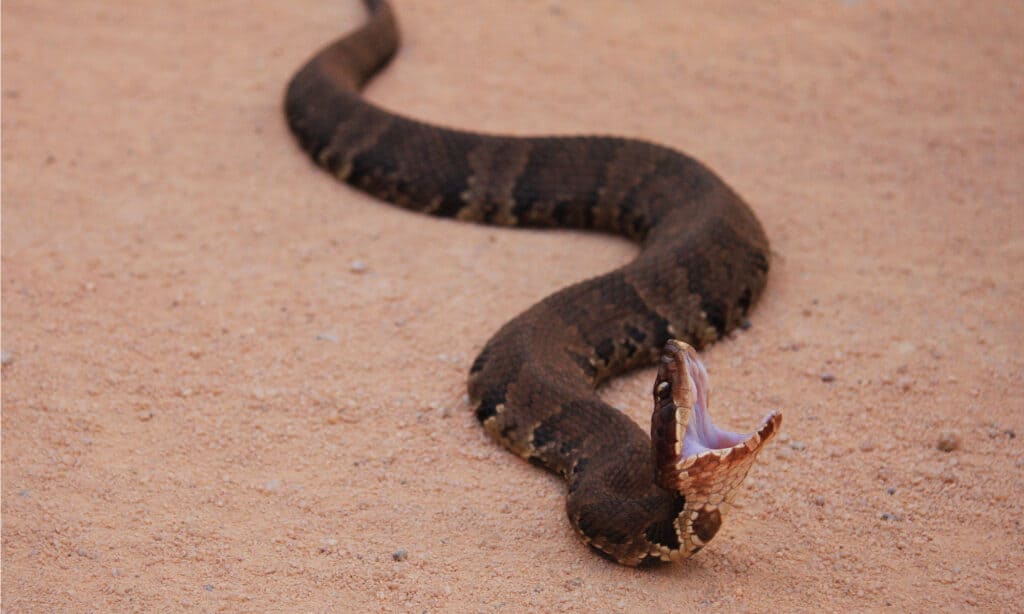
Also known as water moccasins, cottonmouths have cottony white mouths.
©Nathan A Shepard/Shutterstock.com
You may not know it, but cottonmouths are actually pit vipers, meaning they can sense heat. They’re one of the largest vipers in the world, with adults growing up to four feet long. Cottonmouths live in the southeastern United States in semi-aquatic environments like lakes, rivers, and marshes. They’re frequently confused with non-venomous species of water snakes. Water snakes lack the elliptical eyes and fangs of cottonmouths.
8. Northern Pacific Rattlesnake (Crotalus oreganus)
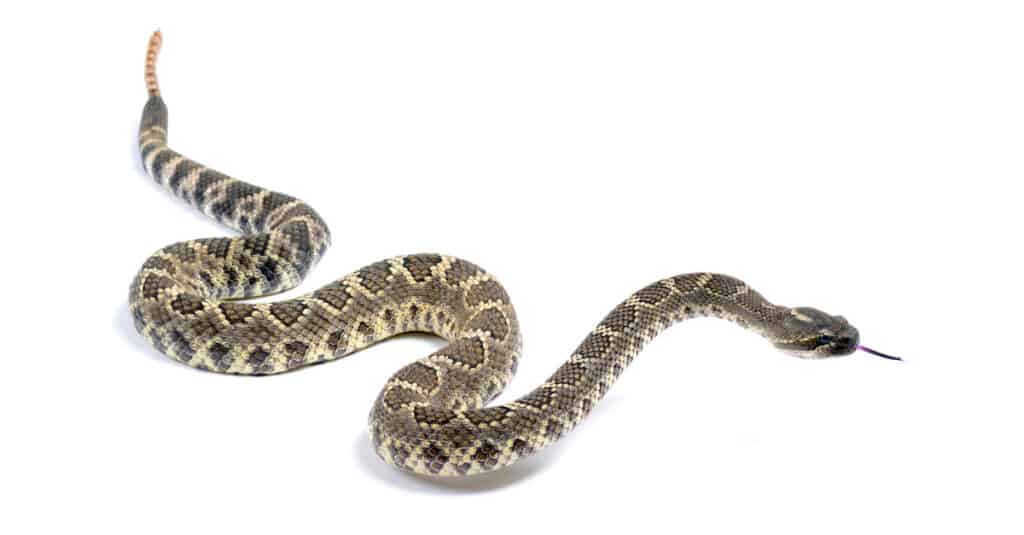
Pacific rattlesnakes live along the Pacific coast of North America, from Baja in the south to British Columbia in the north.
©Audrey Snider-Bell/Shutterstock.com
Most northern Pacific rattlesnakes grow to around four feet long, but it’s not uncommon for larger snakes to reach five feet or more. Like cottonmouths, Pacific rattlesnakes are pit vipers with long, folding fangs designed to deliver hemotoxic venom into prey.
7. Russell’s Viper (Daboia russelii)
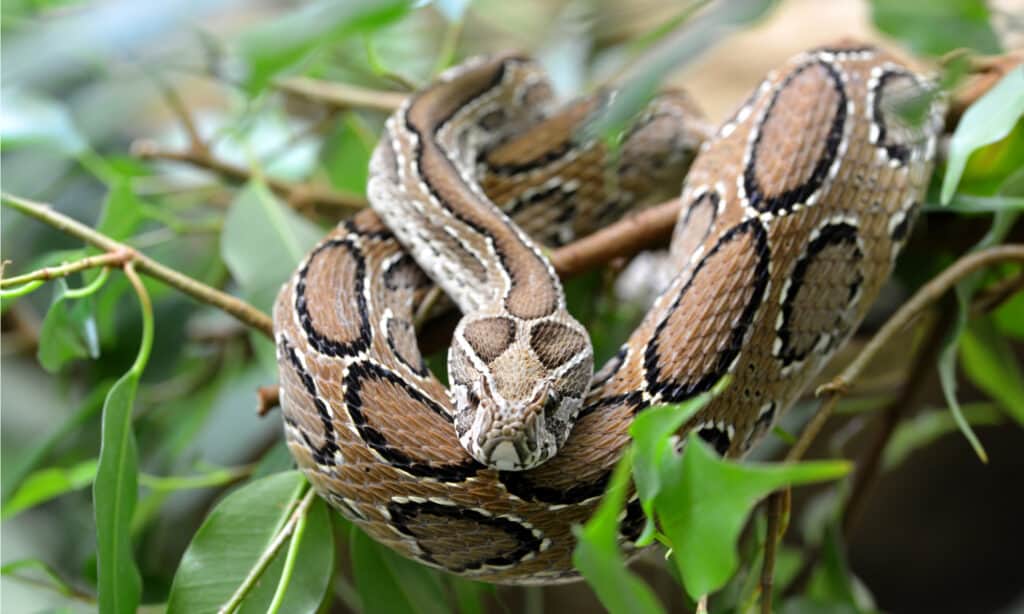
Russell’s vipers live in the Indian subcontinent as well as Sri Lanka.
©jaroslava V/Shutterstock.com
One of the largest vipers in the world is Russell’s viper, which grows up to five feet long. Russell’s vipers have very distinct dark brown diamond patterns overlaid on a sand-colored body. Russell’s vipers are one of the four species of snake responsible for nearly all severe snakebites in India.
6. Timber Rattlesnake (Crotalus horridus)
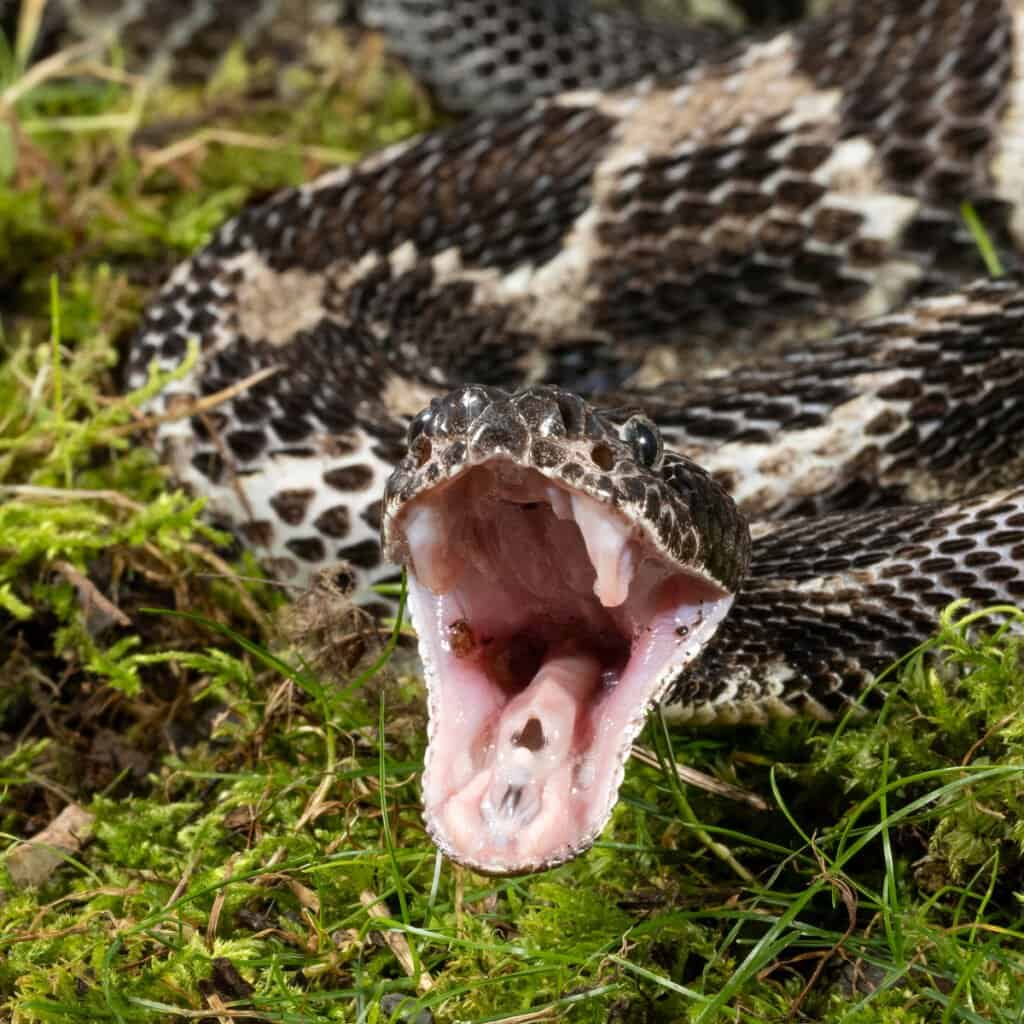
The timber
rattlesnake
is also known as the canebrake or banded rattlesnake.
©Joe McDonald/Shutterstock.com
Timber rattlesnakes live only in eastern North America. They’re closely related to other types of rattlesnakes, like the prairie rattlesnake and the Great Basin rattlesnake. As members of the viper family, timber rattlesnakes are highly venomous, though they rarely bite humans. They grow to a maximum length of around five feet.
5. Western Diamondback Rattlesnake (Crotalus atrox)
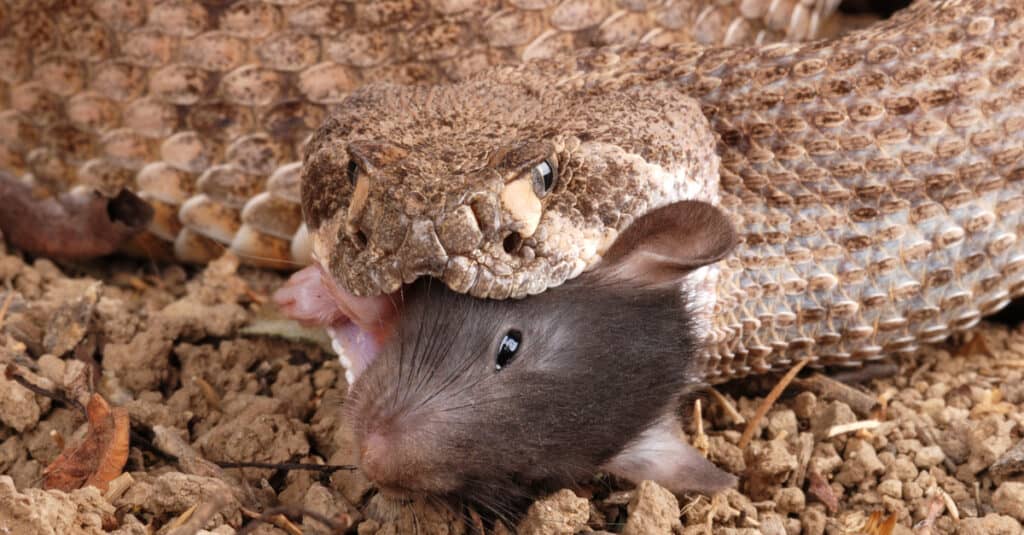
The western diamondback rattlesnake has a broad, triangular head and large fangs.
©Audrey Snider-Bell/Shutterstock.com
Though not quite the biggest, western diamondback rattlesnakes are one of the largest vipers in the world. They grow up to five feet long, and some even grow a few inches past that. They’re the most well-known species of rattlesnake and, unfortunately, also deliver more bites to humans than any other species of rattlesnake. These snakes live throughout the desert southwest regions of the United States and northern Mexico.
4. Terciopelo (Bothrops asper)
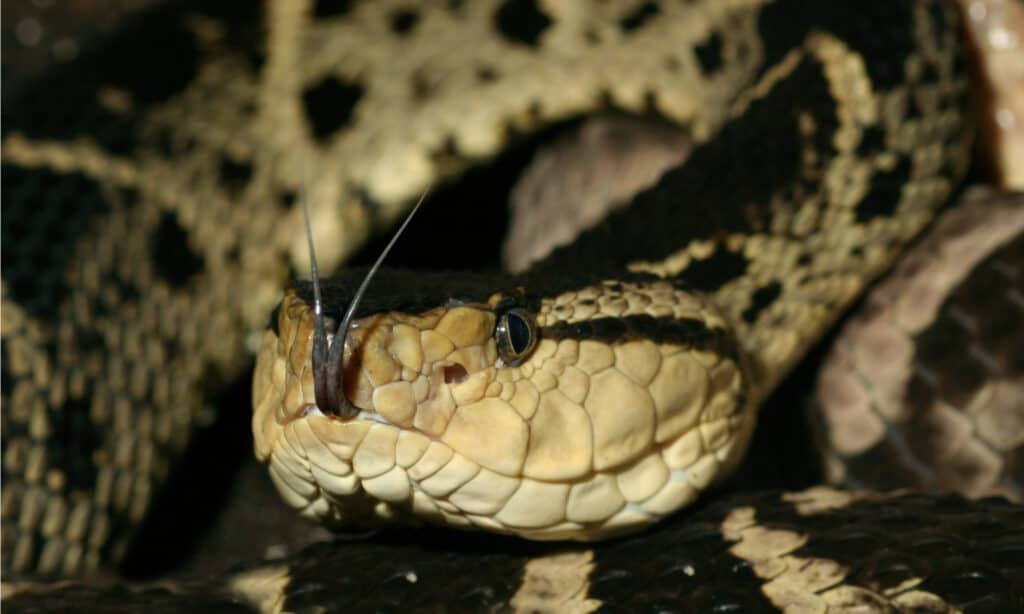
Known for their large, yellow eyes and striking pattern, terciopelos are one of the prettiest species of pit viper.
©Mark_Kostich/Shutterstock.com
Terciopelos are a type of viper endemic to Central America. They have thick bodies and can reach lengths of 5.5 feet long. Like all vipers, they’re venomous and use their highly toxic venom to incapacitate and kill prey. Terciopelos is one of the largest vipers in the world, but they’re still nowhere close to number one on our list.
3. Puff Adder (Bitis arietans)
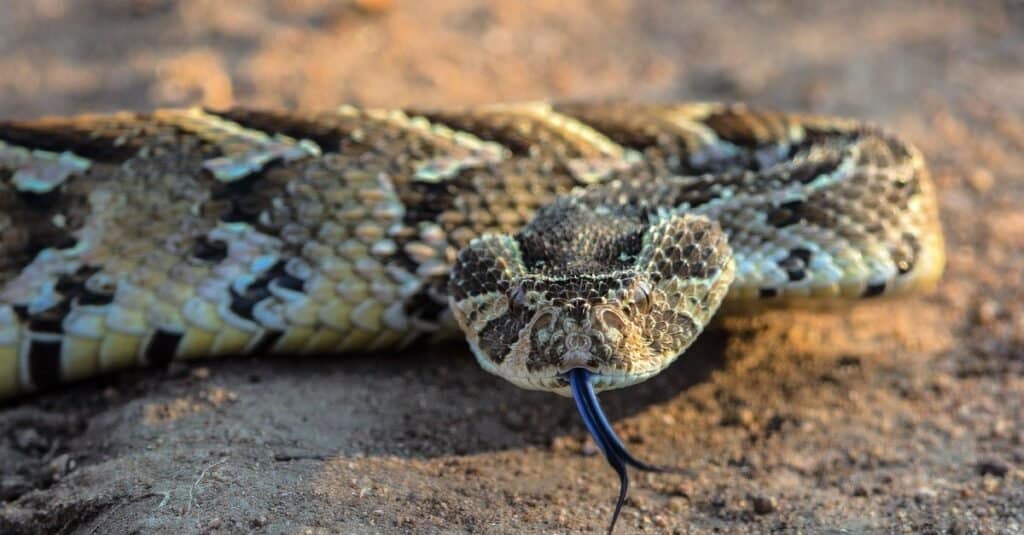
As their name suggests, puff adders are known for puffing up their bodies to appear bigger when they’re threatened.
©iStock.com/S_Lew
One of the largest vipers globally, the puff adder, grows up to six feet long. Puff adders are not to be messed with—they have potent venom and won’t hesitate to defend themselves. Puff adders have heavy bodies designed for blending into the ground and low foliage of central, eastern, and southern Africa. They’re mostly nocturnal and eat rodents, reptiles, and amphibians. Unfortunately, people often come into contact with puff adders, resulting in painful and occasionally life-threatening bites.
2. Gaboon Viper (Bitis gabonica)
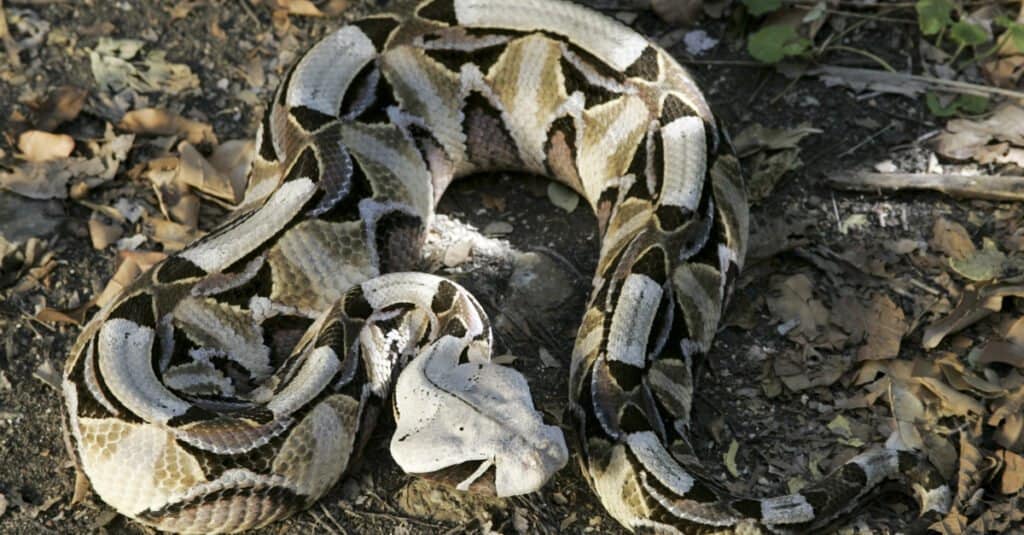
Native to central Africa, Gaboon vipers spend their entire lives on the forest floor.
©Stu Porter/Shutterstock.com
Gaboon vipers may not be the longest vipers globally, but they’re certainly one of the largest vipers in the world. These heavy vipers can reach lengths of five feet and weigh over 25 pounds. Gaboon vipers have the dubious distinction of having the longest fangs of any venomous snake; their fangs can reach over two inches long. Luckily for humans, these venomous snakes tend to stay away from populated areas, preferring instead to hunt rodents and other small mammals in leafy forests.
1. Eastern Diamondback Rattlesnake (Crotalus adamanteus)
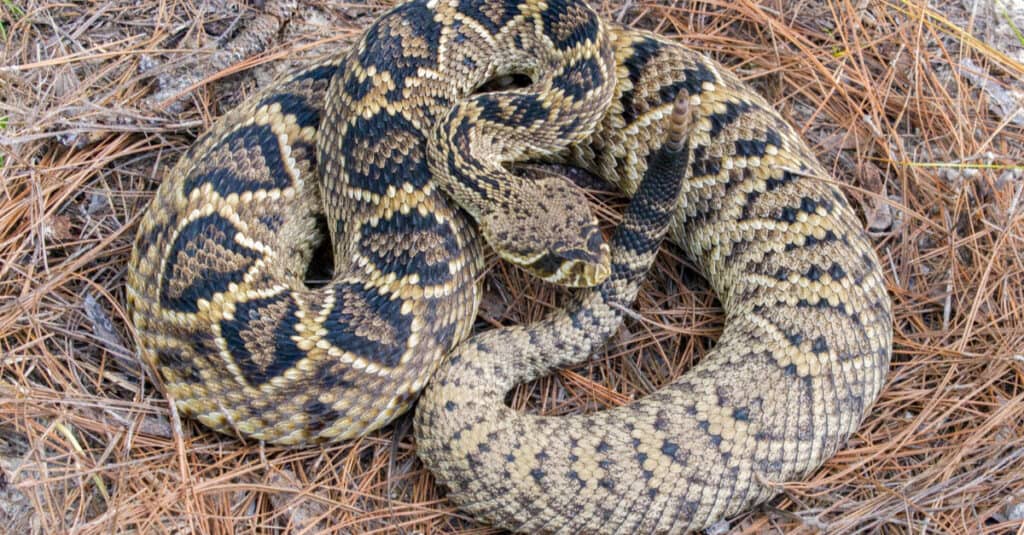
Eastern diamondback rattlesnakes can be found only in the extreme southeastern United States.
©Chase D’animulls/Shutterstock.com
Eastern diamondback rattlesnakes are the largest vipers in the world. These massive pit vipers grow up to seven feet long and can weigh more than 20 pounds. Though most eastern diamondbacks only grow to about five feet long, true behemoths are not uncommon. Their diets consist primarily of small mammals, like rats and rabbits, as well as birds, reptiles, and any other small creature unfortunate enough to cross their path.
Eastern diamondbacks have heavy, thick bodies characterized by regular patterns of light and dark brown scales. Like all rattlesnakes, they have wide, flat heads and vertically elliptical pupils. They’re longer than gaboon vipers, but gaboon vipers tend to weigh more than eastern diamondbacks, despite their shorter length.
Summary Of The 10 Largest Vipers In The World
| Rank | Viper | Location | Size |
|---|---|---|---|
| 10 | Common European Adder | Europe & Asia | 3 feet long |
| 9 | Cottonmouth | Southeastern United States | Grow up to 4 feet long |
| 8 | Northern Pacific Rattlesnake | North America | Grow up to 4 feet long, can reach 5 feet or more |
| 7 | Russell’s Viper | Southeast Asia & Southern China | Grow up to 5 feet long |
| 6 | Timber Rattlesnake | Eastern United States | Grow to a maximum length of around five feet |
| 5 | Western Diamondback Rattlesnake | Southwest United States & Northern Mexico | Grow up to 5 feet long, some a few inches longer |
| 4 | Terciopelo | Central America | Can reach lengths of 5.5 feet long |
| 3 | Puff Adder | Central, east & south Africa | Grow up to 6 feet long |
| 2 | Gaboon Viper | Central, east & west Africa | Can reach lengths of 5 feet |
| 1 | Eastern Diamondback Rattlesnake | Southeastern United States | Grow up to 7 feet long |
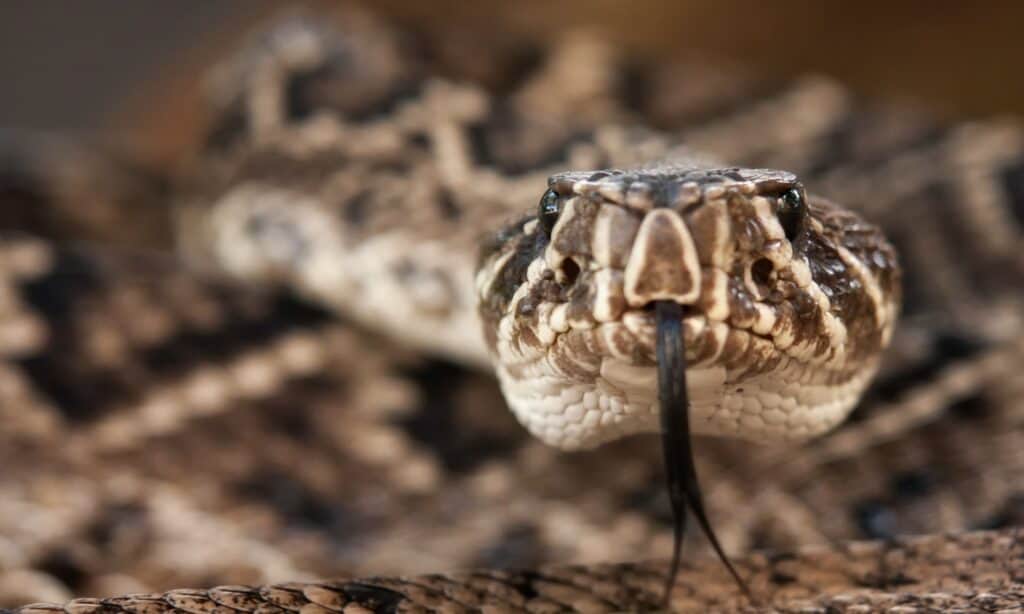
Eastern diamondback rattlesnakes top the list of the largest vipers on Earth and can grow up to 7 feet long.
©iStock.com/Wide-River-Rick
- Discover the ‘Zombie’ Snake That’s Emerging Across the United States
- Giant Sea Snakes: Discover the Largest Sea Snakes in the World
- Discover 7 Types of Rattlesnakes in New Mexico
- Discover the 3 Types of Rattlesnakes in Nebraska
- 6 Poisonous Snakes in North Carolina – And How to Identify Them
Bonus: What Kinds of Pit Vipers Live in the United States?
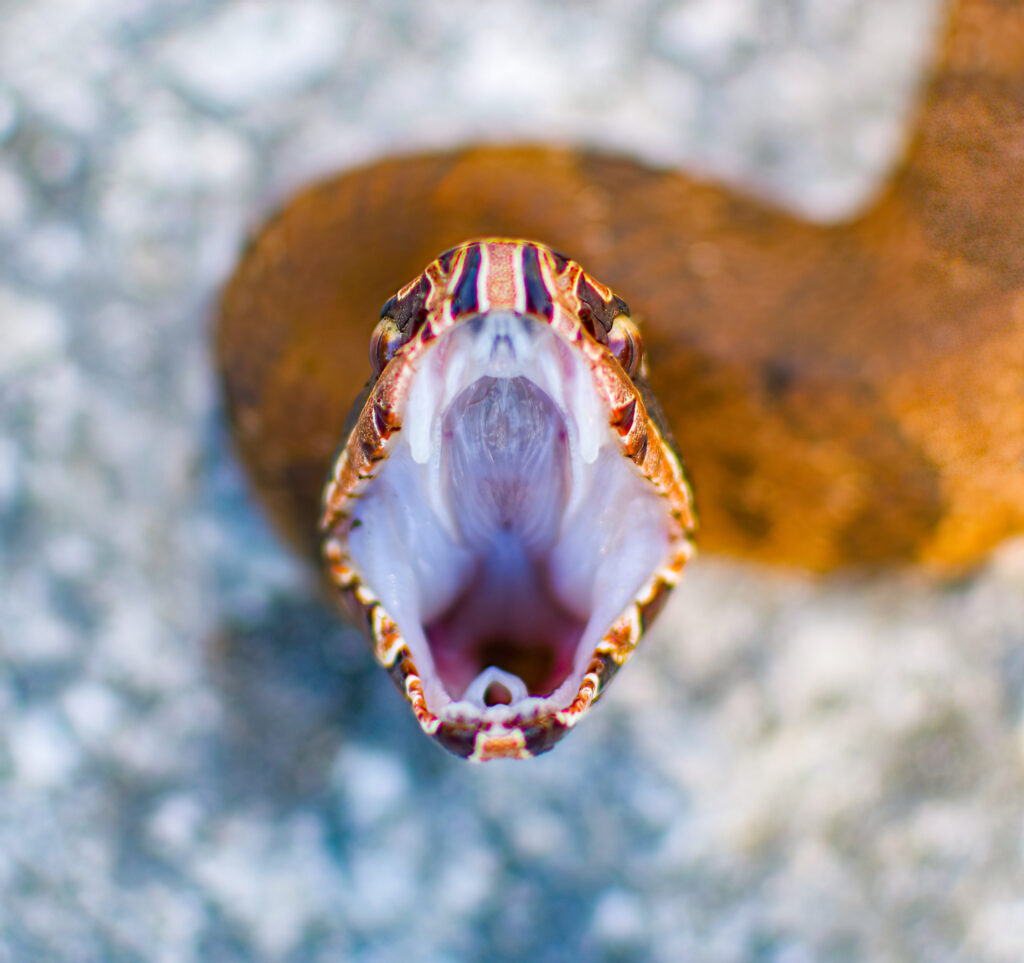
The cottonmouth is a viper species found throughout the southeastern United States.
©iStock.com/Chase D’animulls
There are three types of pit vipers that inhabit different parts of the U.S. Copperheads, cottonmouths, and rattlesnakes are pit vipers and make up a large part of the total population of venomous snakes in the U.S. The other type of venomous snake is the coral snake. Altogether, there are 22 recognized species of venomous snakes in the United States, with a total of 37 subspecies across the country.
Below is a list of 42 various species and subspecies of pit vipers in the U.S.:
- Western Diamondback Rattlesnake
- Eastern Diamondback Rattlesnake
- Timber Rattlesnake
- Mojave Desert Sidewinder
- Sonoran Desert Sidewinder
- Colorado Desert Sidewinder
- Mojave Rattlesnake
- Santa Catalina Rattlesnake
- Banded Rock Rattlesnake
- Mottled Rock Rattlesnake
- Southwestern Speckled Rattlesnake
- San Lucan Speckled Rattlesnake
- Panamint Rattlesnake
- Black-Tailed Rattlesnake
- Grand Canyon Rattlesnake
- Coronado Island Rattlesnake
- Arizona Black Rattlesnake
- Yellow Rattlesnake
- Southern Pacific Rattlesnake
- Great Basin Rattlesnake
- Northern Pacific Rattlesnake
- Twin-Spotted Rattlesnake
- Red Diamond Rattlesnake
- Tiger Rattlesnake
- Hopi Rattlesnake
- Prairie Rattlesnake
- New Mexican Ridge-Nosed Rattlesnake
- Arizona Ridge-Nosed Rattlesnake
- Eastern Massasauga
- Desert Massasauga
- Western Massasauga
- Dusky Pygmy Rattlesnake
- Carolina Pygmy Rattlesnake
- Western Pygmy Rattlesnake
- Florida Cottonmouth
- Western Cottonmouth
- Eastern Cottonmouth
- Northern Copperhead
- Southern Copperhead
- Broad Banded Copperhead
- Trans-Pecos Copperhead
- Osage Copperhead
The photo featured at the top of this post is ©
Discover the "Monster" Snake 5X Bigger than an Anaconda
Every day A-Z Animals sends out some of the most incredible facts in the world from our free newsletter. Want to discover the 10 most beautiful snakes in the world, a "snake island" where you're never more than 3 feet from danger, or a "monster" snake 5X larger than an anaconda? Then sign up right now and you'll start receiving our daily newsletter absolutely free.
Thank you for reading! Have some feedback for us? Contact the AZ Animals editorial team.






